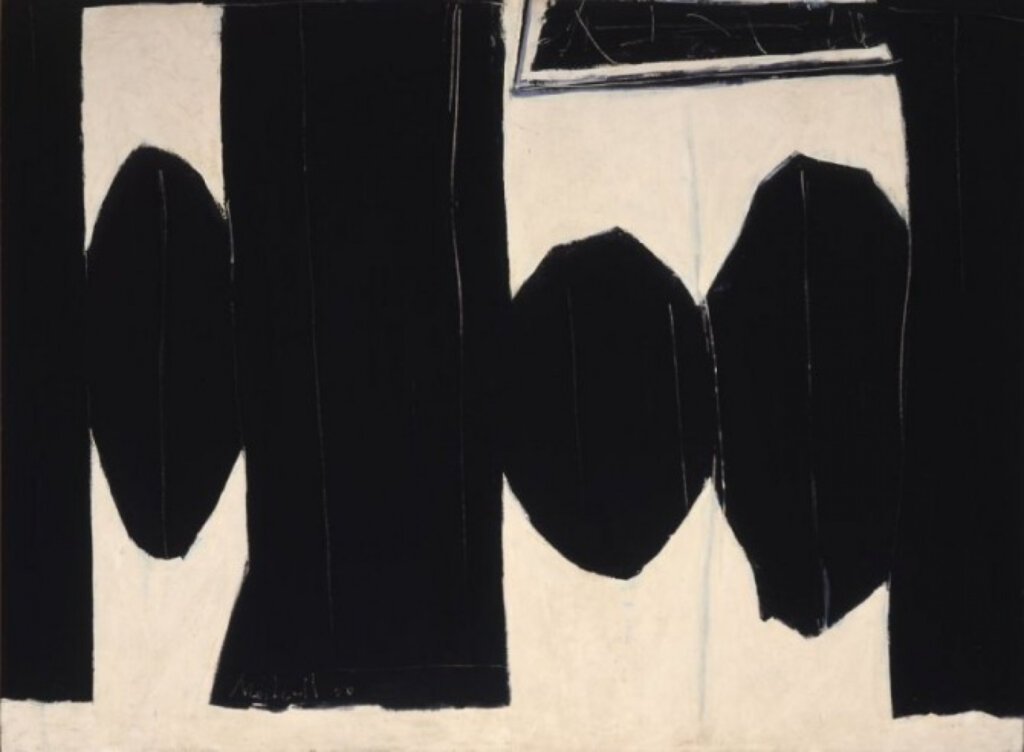Robert Motherwell
Robert Motherwell (1915–1991) stood as an American artist and a pivotal figure within the realm of abstract expressionism. To me, the entire movement was encapsulated in this one name for a considerable period, initially diverting my attention away from the works of other artists within the trend. His creations are renowned for their potent visual expression, marked by strong black-and-white contrasts and the utilization of abstract shapes and symbols. Motherwell’s artistry exuded an arresting and diverse quality, imprinting an enduring legacy on the annals of modern art. Among Motherwell’s most acclaimed series of works is “Elegy to the Spanish Republic,” a collection comprising numerous paintings, drawings, and lithographs. This series emerged as a response to the events during the Spanish Civil War and the rise of the Fascist regime. Infused with black, white, and red hues, these works symbolize the struggles and losses of that era. The abstract forms and vivid contrasts masterfully employed by Motherwell capture the intricate layers of emotion. Leveraging abstract shapes and symbols, he endeavored to articulate universal themes, delving into the human condition and its significance. Motherwell’s artistic contributions wielded a substantial influence over the evolution of abstract expressionism, sparking inspiration among countless artists. For instance, Helen Frankenthaler, Joan Mitchell, and Cy Twombly have all acknowledged the impact of Motherwell on their own work. They embraced the expansiveness and emotiveness of his expression, along with his audacious manipulation of color and form. The ripple effects of Motherwell’s art extended further into the tapestry of art history. His role in shaping modern art, particularly within the abstract expressionist movement, remains profoundly significant. His creations continue to be revered and distinguished within artistic circles.

